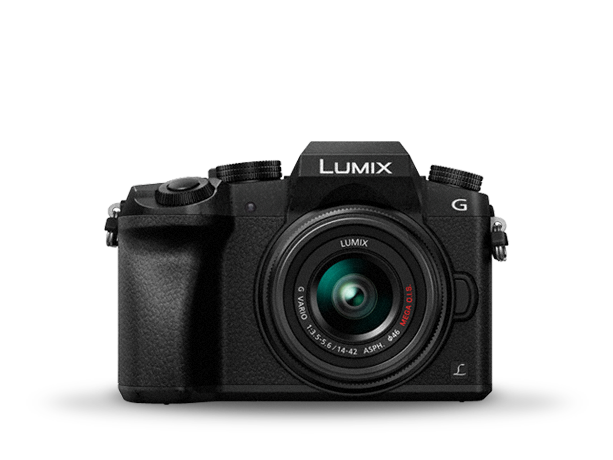As photography enthusiasts explore the evolving world of digital imagery, the question “what is a mirrorless camera?” becomes increasingly pertinent. Notably, mirrorless cameras emerge as compelling alternatives to traditional SLRs, offering a slew of benefits that cater to both seasoned photographers and novices alike. They boast a more compact and lightweight build, omitting the conventional mirror mechanism and reinventing the photographic experience.
One of the standout advantages of mirrorless cameras, like the Panasonic Lumix G7, is their rapid and silent shooting capabilities, a feature that significantly enhances the capture of swift-moving subjects without the distraction of noise. With advanced on-sensor phase-detection autofocus systems, these cameras deliver faster and more precise focus, ensuring every shot is captured with clarity. Moreover, the electronic viewfinders present photographers with a real-time preview of the image, effectively showcasing the impact of exposure, white balance, and other settings before the picture is taken.
For those diving into videography, the superior video capabilities of mirrorless cameras cannot be overstated. Users can expect top-tier video quality, heightened frame rates, and a suite of sophisticated features that were once the domain of high-end SLRs. Additionally, an expanding repertoire of lenses designed specifically for mirrorless systems further solidifies their place in any photographer’s toolkit.
The flexibility and customization offered by mirrorless cameras are unparalleled. From personalized buttons and touchscreens to an array of adapters for vintage or SLR lenses, these cameras are crafted to adapt to the unique needs of each photographer. As technology marches forward, improvements in battery life and the release of continual firmware updates ensure that the benefits of using a mirrorless camera only magnify with time.
Weather-sealing, in-body image stabilisation, and a growing selection of lenses have elevated the mirrorless camera to a robust tool suited for an array of photographic scenarios. Whether it’s navigating the exigencies of action photography with high-speed continuous shooting or refining images with live histograms and focus peaking, mirrorless cameras offer a world of possibilities.
In this article, readers will understand why embracing the benefits of a mirrorless camera could be a game-changer in their photographic journey. From the user-friendly design suitable for entry-level photographers to intricate features that satisfy the demands of professionals, mirrorless cameras stand as a testament to innovation in photography.
Mirrorless Cameras vs. SLRs: An In-depth Comparison
When weighing the benefits of mirrorless cameras against their SLR counterparts, battery life is a critical factor. SLR cameras generally have superior battery longevity, offering around 600 to 800 shots per charge. Mirrorless cameras, in contrast, offer around 300 to 400 shots per charge due to their electronic viewfinders and LCD screens, which consume more power. However, despite this discrepancy, the gap is narrowing as newer mirrorless models introduce batteries with extended life, mitigating this concern.
Battery Life Comparison:
- SLR Cameras: 600-800 shots per charge.
- Mirrorless Cameras: 300-400 shots per charge.
This metric is essential for photographers who spend extended periods in the field or those who prefer not to carry multiple batteries. Potential buyers need to consider their shooting habits and the environment in which they will be using their cameras. For less intensive use or in situations where recharging is accessible, the benefits of a mirrorless camera might outweigh the convenience of longer battery life.
The evolution of mirrorless cameras also signifies an eagerness amongst manufacturers to address the concerns of photographers. Efforts to improve battery efficiency and the availability of auxiliary power options, such as power banks and grip extensions, present viable solutions for extended shooting periods. These improvements emphasize the industry’s commitment to marrying the compact, versatile nature of what is a mirrorless camera with the reliable performance traditionally associated with SLRs.
In summary, while SLRs may currently have an edge in battery performance, mirrorless cameras continue to close the gap. They already excel in other numerous aspects, such as size, autofocus speed, and video capabilities, reinforcing the growing list of benefits of a mirrorless camera. Whether for still photography or video, the question of ‘what is mirrorless camera’ choice best suited for an individual ultimately boils down to weighing these contrasting features against personal needs and preferences.
Conclusion
In conclusion, mirrorless cameras have clearly delineated themselves as formidable contenders in the world of digital photography, offering a wealth of benefits that serve to enrich the creative process for photographers and videographers alike. Throughout this article, we’ve explored how their lighter build, swift autofocus, and real-time imaging feedback enable a more intuitive and dynamic photographic experience, a significant departure from traditional SLRs. Additionally, we’ve seen that while battery life remains a consideration, the gap between mirrorless cameras and SLRs is narrowing, assuring users of the ongoing advancements and dedication to user-centric innovation.
As we reflect on the merits of mirrorless technology—its video prowess, customization options, and ever-growing lens selection—it becomes apparent that the photographic journey is being redefined. Whether you’re an aspiring photographer or a seasoned professional, embracing a mirrorless camera could be the transformative step that elevates your craft to new heights. By considering the insights provided, readers are equipped to make an informed decision on whether a mirrorless camera aligns with their artistic vision and practical needs, amidst a rapidly evolving digital era.
Similar Articles









